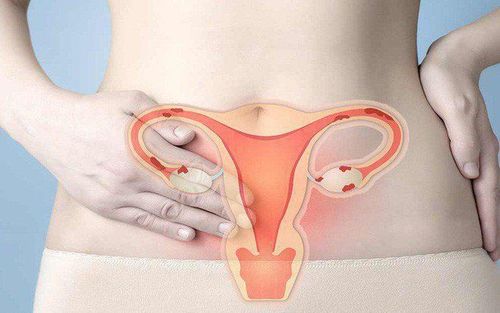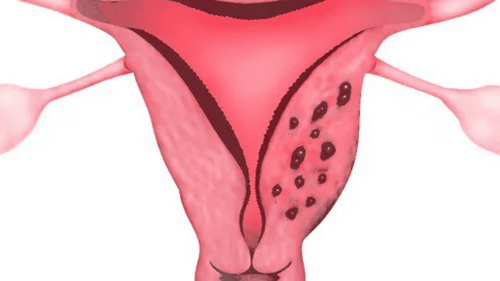This is an automatically translated article.
Endometrial ablation is a gynecological technique applied in certain indications, and like many other interventional techniques, endometrial ablation has some caveats that need to be understood first. When conducting.
1. What is endometrial ablation?
Endometrial ablation is a technique that uses physical methods to remove the endometrium, with the aim of reducing the amount of menstrual bleeding (in some women it can be completely eliminated). no more bleeding). Although called endometrial ablation, the entire procedure does not require an incision, because the instruments will be inserted by the doctor into the uterus through the vagina.
The equipment and instruments needed to perform an endometrial ablation will vary widely, depending on the method used by the doctor, they may include extreme cold, thermal solutions, microwave sources. or high frequency waves. The choice of method should be based on the specific condition of the patient, such as the size or condition of the patient's uterus.
2. Why is endometrial ablation needed?
Endometrial ablation is one of the methods used to treat the problem of excessive blood loss during the menstrual cycle, and it may be considered when:
Heavy menstrual bleeding abnormality, sometimes defined as 2 hours or less for the patient to change pads or tampons. Bleeding lasts more than 8 days. Anemia occurs due to excessive blood loss. To reduce the amount of menstrual blood, usually the doctor will prescribe some medical treatment or use an intrauterine device (IUD). Endometrial ablation is an alternative if the above methods are ineffective, or for some other reason not possible.
Endometrial ablation is not usually indicated for postmenopausal women or women who:
Have certain uterine abnormalities. Uterine cancer, or being at risk for uterine cancer. Have a pelvic infection.

Ung thư tử cung không được chỉ định cắt bỏ nội mạc tử cung
3. Possible risks when performing endometrial ablation
Complications of endometrial ablation are rare, they are usually:
Pain, bleeding or infection. Heat or cold injury to adjacent organs. Uterine perforation (caused by instruments during the technique).
4. Endometrial ablation and future pregnancy
After having an endometrial ablation, a woman can still get pregnant in the future, but the pregnancy carries more risks for both the mother and the fetus, and the eventual outcome of the pregnancy. The pregnancy can be a miscarriage (because the endometrium of the uterus has been damaged), or an ectopic pregnancy (the fetus develops in the fallopian tube or cervix, not inside the uterus). ).
Several sterilization methods may be used during endometrial ablation. For patients planning to undergo endometrial ablation, prolonged or sterile contraception is recommended to prevent pregnancy.
5. Before performing endometrial ablation, what do patients need to prepare?
Before performing endometrial ablation, the doctor may ask the patient to:
Check pregnancy status: Endometrial ablation cannot be performed while the patient is pregnant. Cancer screening: The patient will have a sample of endometrial tissue taken to check for cancer. IUD removal: If the patient has an IUD, it will need to be removed before the endometrial ablation can be performed. Thinning of the endometrium: Some endometrial ablation procedures are more successful if the endometrium is thin, so before endometrial ablation, your doctor may thin it out. endothelium by medication or procedure. Discuss the method of anesthesia applied before performing endometrial ablation.

Bệnh nhân cafand dược khám lâm sàng trước khi cắt bỏ nội mạc tử cung.
6. Commonly used endometrial ablation methods
Endometrial ablation can be done by different methods. Commonly used methods include:
Electrocautery: This method will use an electrical ring inserted through the laparoscope into the uterine cavity through the vagina, and the patient needs to be anesthesized with general anesthesia before perform. Cryosurgery: Extreme cold will be used to create 2 or 3 ice balls to freeze and destroy the endometrium, with the help of real-time ultrasound monitoring. The duration of the technique depends on the size and shape of the patient's uterus. Thermal solution: An isotonic solution is heated and flowed into the uterine cavity over a period of 10 minutes. The advantage of this method is that it can be performed in women whose uterus is irregular in shape due to the growth of abnormal tissue masses - such as fibroids. Heat balloon: A balloon is inserted into the uterus through the cervix, then stretched with a thermal solution, and depending on the type of balloon, this procedure is done for 2 to 10 minutes. Microwave: A device that generates microwaves is inserted into the uterus, the microwaves generated will generate heat to destroy the endometrium. Doing this method usually only takes 3 to 5 minutes. Radiofrequency: A special device inserted into the uterus sends high-frequency waves for 1 to 2 minutes to complete the technique.
7. Common problems after endometrial ablation
After endometrial ablation, patients often experience the following problems:
Cramping pain: Patients often experience cramping pain for a few days, and can use common pain relievers to relieve the pain. ease the pain. Vaginal discharge changes: Within a few weeks the vaginal discharge will change (thin, bloody discharge). The most fluid will be secreted in the first days after performing the technique. Increased frequency of urination: Patients will often feel the urge to urinate more frequently during the first 24 hours after an endometrial ablation. Endometrial ablation is one of the methods used to treat the problem of excessive blood loss during the menstrual cycle or due to some other cause. However, after this procedure, patients may experience some complications that affect their quality of life as well as health. Therefore, methods of prevention and early recognition of gynecological diseases will ensure women's health as well as reproductive function in the future.
To help customers detect and treat gynecological diseases early, Vinmec International Hospital is currently implementing a basic gynecological examination and screening package to help customers detect inflammatory diseases early. Infection makes treatment easy and inexpensive. Screening detects gynecological cancer (cervical cancer) early even when there are no symptoms.
Basic gynecological examination and screening package for female customers, has no age limit and may have the following symptoms:
Abnormal vaginal bleeding Having menstrual problems: irregular menstrual cycle, irregular menstrual cycle Irregular vaginal discharge (smell, different color) Vaginal pain and itching Female clients have several risk factors such as poor personal hygiene, Unsafe sex, abortion,... Female customers have other symptoms such as: Abnormal vaginal discharge, itching, pain in the private area, abnormal vaginal bleeding. To register for examination and treatment at Vinmec International General Hospital, you can contact Vinmec Health System nationwide, or register online HERE
Reference article: mayoclinic.org
See also:
What is endometrium? What is endometrial biopsy? Purpose of endometrial biopsy













